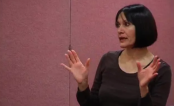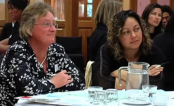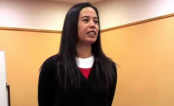You are here:
Further resources
Ministry of Education resources
- Te Whakaipurangi Rauemi
- Ka Mau te Wehi!
- Te Reo Māori Lesson Plans
These resources are all available from the 'Teacher resources' section of this website. Te Reo Māori in English-medium Schools is part of Te Kete Ipurangi’s Learning Languages Community. It offers a growing range of information and resources relevant to the teaching and learning of te reo Māori in primary and secondary classrooms.
Ministry of Education. (2006). Te Kete Kupu. Wellington: Huia Publishers. This illustrated high-frequency word list is intended as a dictionary for children in years 1–3. Rather than traditional definitions, it provides examples of the major meanings of each word in the context of sentences.
Ministry of Education. (2006). Tirohia Kimihia. Wellington: Huia Publishers. Tirohia Kimihia is a junior learner dictionary of Māori, the first to be written entirely in Māori.
Other online resources
A wealth of resources is available online: print-based resources (books, magazines, and pamphlets); visual-language resources (posters, television, videos and DVDs); and audio resources (iwi radio, compact discs, audiotapes and listening posts). The Te Reo Māori in Schools Community provides the best starting point for teachers of te reo Māori. The following sites are also helpful starting points:
-
Te Puni Kokiri
Te Puni Kokiri (Ministry of Māori Development) is the Crown’s principal adviser on Crown–Māori relationships. Te Puni Kokiri also guides Māori public policy by advising the government on policy affecting Māori well-being and development. -
Te Taura Whiri i te Reo Māori
Te Taura Whiri i te Reo Māori (Māori Language Commission) was set up under the Māori Language Act 1987. Its purpose is to promote the use of Māori as a living language and as an ordinary means of communication. The Commission’s website offers a wealth of information and resources.
Other print resources
Barlow, C. (2001). Tikanga Whakaaro: Key Concepts in Māori Culture. South Melbourne, Victoria: Oxford University Press. Cleve Barlow defines and discusses seventy important concepts in tikanga Māori, using both English and te reo Māori.
Macfarlane, A., Glynn, T., Grace, W., & Penetito, W. (2005). He Tikanga Whakaaro: A Response from a Māori Worldview to the Proposed New Zealand Curriculum Framework Key Competencies. Paper prepared for the Ministry of Education Curriculum, Teaching, and Learning Division. Wellington: Ministry of Education.
Mead, H.M. (2003). Tikanga Māori: Living by Māori Values. Wellington: Huia. This is a comprehensive and authoritative text on all aspects of tikanga Māori.
Acknowledgment and translations
The whakatauākī on page 13 was created by Tuteira Pohatu for The New Zealand Curriculum to reflect the essence of the learning area of learning languages. The English version is also by Tuteira Pohatu.
Pepehā me te mihi (sayings and greetings)
Many of the pepehā and mihi (sayings and greetings) in te reo Māori that feature in this book were sourced from Mead and Grove’s (2001) collection of more than 2500 pepehā – sayings and whakataukī that represent some of the richness of Māori oral literature.
Translations
The whakataukī on page 24 of Ka Hikitia – Managing for Success 2008–2012, which is quoted on page 11 of these curriculum guidelines, can be translated as follows.
|
Te reo Māori Ko te reo te manawapou o te iwi Mā te kōrero Te reo e ora ai Mā te ora o te reo Ka rangatira. |
Māori language |
| The three whakataukī quoted on page 14 of The New Zealand Curriculum, which are reproduced on page 12 of these curriculum guidelines, can be translated as follows. | |
|
Ko te reo te manawa pou o te Māori, Ko te ihi te waimanawa o te tangata, Ko te roimata, ko te hūpē te waiaroha. |
Language is the lifeblood of Māori, |
| Ko tōku nui, tōku wehi, tōku whakatiketike, tōku reo. | My language is my greatness, my inspiration, that which I hold precious. |
| Ko te reo Māori te kākahu o te whakaaro, te huarahi i te ao tūroa. | The Māori language is the cloak of thought and the pathway to this natural world. |
|
Ko te manu e kai ana i te miro, nona te ngahere. Ko te manu e kai ana i te mātauranga, nona te ao. |
The bird that partakes of the miro berry reigns in the forest. |
| Ko te reo te mauri o te mana Māori. | Language is the life force of Māori. |




